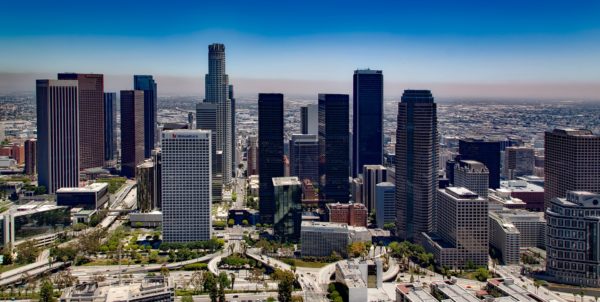
The city of Los Angeles is many things to many different people. Depending on your experience, it can be the City of Angels, La-La Land or Lost Angeles. Moving to Los Angeles (colloquially referred to as “LA”) can be exciting, overwhelming and daunting all at the same time.
It’s no urban myth that relocation to LA spikes during the winter months. Those freezing in the Midwest and East Coast are dreaming of warmer days. They may even catch a glimpse of LA’s sunny skies and 70-degree weather during the annual televised Tournament of Roses Parade on New Year’s Day.
But before you start having dreams of sand and surf, you’ll want to consider the pros and cons of living in LA. There are also some economic and social considerations to note when pondering whether you want to live and work in the second largest city in the U.S.
Read on for our comprehensive guide to the top five things you need to know about moving to Los Angeles. May we get a lights, camera and action as we get a close-up on LA. Quiet on the set—we’re rolling.
1. City, Beach and ‘Burbs: There’s No Place Like Home
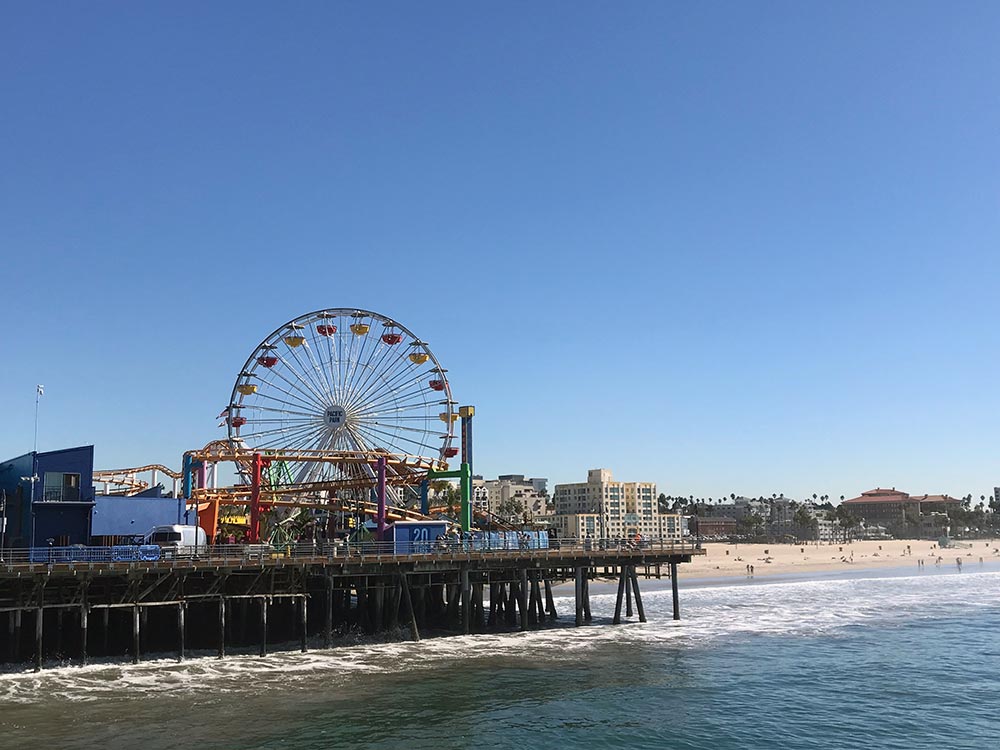
Unlike other metropolitan cities, Los Angeles is spread out. The city is 502.7 square miles, which explains why nobody walks in LA.
Los Angeles County includes 88 cities, such as Beverly Hills, West Hollywood and Santa Monica, which operate independently of Los Angeles proper but are still part of the overall metropolis. The outlying areas, such as Orange County and the San Gabriel Valley, are often referred to as “Greater Los Angeles.”
Los Angeles Neighborhoods
Los Angeles consists of many neighborhoods, each with its own unique cultural identity. As Randy Newman put it, From the South Bay to the Valley and the Westside to the Eastside, some of LA’s most popular neighborhoods include:
Eastside:
- Downtown Los Angeles (or DTLA)
- Hollywood (sorry, folks, this isn’t its own city)
- Silver Lake
- Echo Park
- Highland Park
Westside:
- Venice
- Santa Monica
- Brentwood
- Culver City
- Marina del Rey
San Fernando Valley (or, what is famously known as “The Valley”):
- Northridge
- Van Nuys
- Studio City
- Toluca Lake
- Encino
South Bay:
- San Pedro (home to the Port of Los Angeles, ranked as the number one container port since 2000)
- Palos Verdes
- Redondo Beach
- Hermosa Beach
- Long Beach
How to Choose Where to Live in Los Angeles

1. Consider the cost of housing.
When deciding on which area of Los Angeles to live in, many factors come into play. According to Business Insider, the median cost for a one-bedroom apartment in LA is upwards of $2,300. The cost of rent and shortage of housing explains why nearly half of adults living in Los Angeles have one or more roommates.
Some neighborhoods come at a higher cost so finding a place to live will depend on the size of your paycheck. Traditionally, you should spend no more than thirty percent of your net income (your take-home pay) on rent.
If you desire to live near the beach in a neighborhood such as Santa Monica, expect to pay a premium for a studio apartment with no guarantee of a parking space.
The median home price, according to real estate tracker Zillow, is $752,508. That will likely get you a two-bedroom, one bath in an average or below average neighborhood.
2. Consider your commute to work or school.
Another important factor to consider in LA is your commute to work or school. If you live in Downtown LA and work in Santa Monica, you can expect a 75-minute commute or longer each way. Geographically, the two locales are a mere 15 miles apart. Distance does not dictate the time it will take to actually get to where you are going in LA.
3. Consider your lifestyle.
When selecting a neighborhood, you’ll want to consider how far you’re willing to drive every time you leave the house. Would you prefer to live in an area where you can walk to restaurants and shops, such as Larchmont Village or the Arts District? Are you active and want to live near the ocean in Malibu or Venice? Do you like bucolic hikes and have a desire to plant your roots down near the foothills of the Santa Monica Mountains? Are you someone who craves nightlife and do you prefer a speakeasy over a sports bar? Then Silver Lake might be the place for you.
Other things to consider when selecting an area is the convenience of public transportation, crime rate and statistics, access to the freeways, and other items that may be high on your amenities list when choosing a place to nest. For instance, those with children may want to do additional research when choosing public schools or private schools in LA.
2. In LA, Sometimes We Can All Use a Lyft
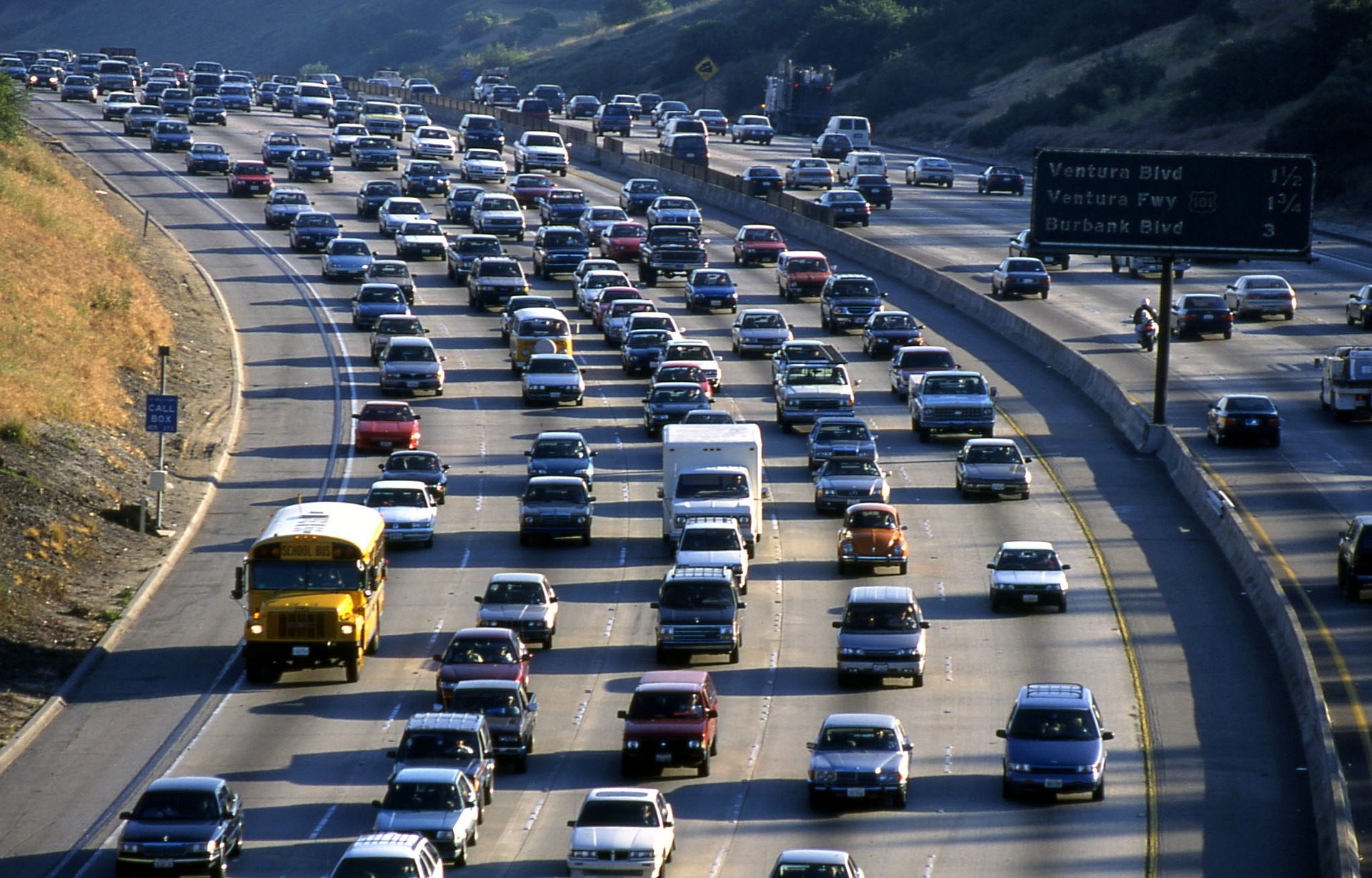
Navigating Los Angeles’ sprawling landscape can be one of the biggest challenges of moving to the city. There are different options for getting around the city. However, most Angelenos, a term for those native to Los Angeles, prefer to drive their own car.
Getting Around Los Angeles
Public Transportation
Many find the city’s public transportation to be a challenge. This is slowly starting to change as the LA Metro System continues to grow and expand its service areas across the Southland. There are also city buses, mini shuttles that operate in specific business districts and, as mentioned above, the expanding light rail system that fans out across the city and into neighboring counties.
Ride-share
Ride-sharing options, such as Uber and Lyft, are extremely popular, whether you’re running errands or getting to and from social outings. Still, in spite of all the hours spent sitting in traffic, darting across town or clocking miles on the freeway, Angelenos remain obsessed with their cars (and with good reason).
Even though there have been many campaigns to encourage ride-sharing among residents and co-workers, driving is still the preferred mode of transportation.
Ride a Bike or Scooter
LA Metro’s bike share system offers shared bikes at hubs as well as dockless throughout the city. For less than $2, you can rent a Metro Bike for 30 minutes, which is just enough time to run a quick errand without having to Uber or drive yourself. Need it longer? Opt for the day pass, which costs $5 and is good for 24 hours of unlimited rides under 30 minutes each. Bird scooters are also very popular and can be found at nearly every corner in LA. But be safe. Wear a helmet and don’t ride on the sidewalks.
Drive Your Own Car
For most newcomers, the Los Angeles freeway system can be daunting. It’s an intricate tangle of roadways punctuated with heavy traffic and pavement spread across as many as five lanes (10 lanes, if you include both directions). Los Angeles freeway drivers can expect speed limits up to 65 miles per hour, merging lanes and navigating complex on-ramps and off-ramps.
Learning the freeway system can also be somewhat of a challenge. You will likely encounter erratic drivers who impatiently weave in and out traffic thinking they’ll somehow beat the rest of us to the finish. Or, quite the opposite, you are also likely to encounter distracted drivers who are caught mid-sentence. (This is your reminder. Don’t text and drive.)
Fans of SNL’s “The Californians” will remember the not ready for prime time players poking fun at Angelenos’ dialect and constant obsession with freeway numbers. While the sketch was meant to be a parody, it’s also true that freeway directions are typically spoken as a number instead of name. For example, if you want to get to West Hollywood from Newport Beach, you’d hop on the 405 north to the 10 east and exit La Cienega. You’d never tell someone to take the San Diego Freeway north to the San Bernardino Freeway east and exit La Cienega. Never. Why? It’s one of the greatest mysteries when it comes to moving to Los Angeles that we just don’t question. It simply is.
Understanding LA’s Freeway System
All freeways in LA have both a name and number. The name should indicate the road’s final destination, but this is not always the case, which is probably why no one says the freeway’s name. The San Diego Freeway, also known as the I-405, doesn’t end in San Diego but rather merges with the I-5 Freeway in Orange County, also known as the Santa Ana Freeway. It is the 5 Freeway—the Santa Ana Freeway—that actually takes you to San Diego. There are many examples where the rule just doesn’t apply, so you may want to refer to the freeway number and name chart below:
| Freeway Number | Freeway Name |
| 2 | Glendale |
| 22 | Garden Grove |
| 71 | Corona Expressway |
| 105 | Glen Anderson |
| 170 | Hollywood |
| 710 | Long Beach |
| 14 | Antelope Valley |
| 60 | Pomona |
| 101 | Ventura/Hollywood |
| 134 | Ventura |
| 605 | San Gabriel |
| 10 | Santa Monica/San Bernardino |
| 57 | Orange |
| 91 | Riverside/Artesia |
| 118 | Simi Valley/San Fernando Valley |
| 405 | San Diego |
| 5 | Golden State/Santa Ana |
| 90 | Marina |
| 110 | Pasadena/Harbor |
In LA, rush hour is every hour. Traffic patterns that were once clearly defined no longer exist. Always give yourself plenty of time to reach your destination and extra time to find parking. Read those parking signs closely. They’re known to be a doozy.
3. LA is the land of opportunity.

The unemployment rate for Los Angeles County, like most of the country, was at an all-time low before the COVID pandemic. The rate was at just 4.6%—slightly higher than the national average. The average weekly wage for those working in LA County was $1,343.
It’s no secret that Los Angeles is the “Entertainment Capital of the World,” but there are other industries that deserve more than a supporting role when it comes to economic development. Among them are aerospace, tourism and tech. In fact, LA’s coastal communities have attracted a number of tech companies, earning this sandy span of collective towns the moniker Silicon Beach. Hulu, Amazon and Google are among the few established companies dispersed among the many start-ups.
Tips for Finding a Job in LA

If you’re considering moving to Los Angeles without a job, finding one probably won’t be a problem. However, landing a job that pays well might prove to be harder than you’d think.
While there are plenty of opportunities, the market is also saturated in certain sectors. Networking is key to help get your foot in the door.
Among LA’s major employers are Google, the Jet Propulsion Laboratory (JPL) in Pasadena, The Walt Disney Company Studios with its animation studios in Burbank (let’s hear it for Mickey Mouse), Nestle USA in Glendale and the city of Long Beach–which is also home to the Port of Long Beach.
There are also plenty of jobs that pay minimum wage. In Los Angeles County, the minimum wage is currently $13.25/hour for employers with less than 26 employees and $14.25 for companies with more than 26 staff members. Each year on July 1, the minimum wage will increase incrementally until it reaches $15 an hour, regardless of the number of employees, in 2021.
LA’s “gig economy” is noteworthy and something to consider, too. From ride sharing to food delivery, app-based services are very popular in LA and create many job opportunities. Some work solely in the gig economy whereas others will sometimes supplement their income by picking up a few gigs here and there.
4. It’s time for Doger baseball!

LA is home to some of the greatest athletes and some of the best teams across many leagues. From baseball to basketball to hockey to soccer, sporting events in LA are year-round.
Sports Teams in Los Angeles
- MLB. One of LA’s greatest pastimes is going to a Dodger game at Dodger Stadium in Elysian Park. Affectionately referred to as “Los Doyers” by the locals, the Dodgers are a strong piece of LA’s identity. Thirty miles south of Dodger Stadium is Angels Stadium of Anaheim, which is home to the Los Angeles Angels of Anaheim.
- NFL. In one year, Los Angeles went from having no professional football team to having a pair of NFL teams. After a 20-year hiatus, the Rams returned to LA after spending two decades in St. Louis. Then LA acquired (some fans say “stole”) the Chargers from San Diego.
- NBA. Let’s go Lakers! In addition to the Los Angeles Lakers, LA is also home to the Los Angeles Clippers and WNBA’s Los Angeles Sparks–all of whom play at the STAPLES Center in Downtown LA.
- NHL. Ice ice baby. Fun fact: the LA Kings also play at the STAPLES Center, sometimes on the same day as one of LA’s basketball teams. The floor can be converted from a basketball court to an ice rink in a matter of hours.
- MLS. Futbol fans can catch the LA Galaxy and the Los Angeles Football Club.
5. There is always something to do in LA.

Sure, living in LA (heck, even just visiting LA) can be pricey. But sometimes the best things in life really are free–or close to it. If you’ll be moving to Los Angeles with no money, don’t panic. You don’t have to spend a ton to have a good time in the City of Angels, and here’s the proof.
- Go people-watching. Head to the boardwalk at Venice Beach to watch bodybuilders pump iron or an eclectic troupe of street performers show off their talents. There’s also The Grove and LA’s world-famous Original Farmers Market located in Mid-City, both great locales for celebrity spotting.
- Attend a TV taping. Be part of a studio audience or vie for a spot on a game show, like Wheel of Fortune. Tickets are free, but must be reserved in advance.
- Encounter a celebrity. Get up-close and personal with some of Hollywood’s most famous stars at the Hollywood Forever Cemetery. This is where the rich, famous and infamous took their final bow–and reading the headstones costs absolutely nothing.
- Visit an art museum. Try the Broad, Museum of Contemporary Art, Getty Center or Getty Villa, where admission is free. Barnsdall Art Park in East Hollywood also offers many free cultural events throughout the year as well as breathtaking views of the Hollywood sign and the famous Hollyhock House that was designed by Frank Lloyd Wright.
- Take in a summer concert. Head over to the Santa Monica Pier every Thursday night from 7-10 PM June-August for live music—totally free.
- Go for a hike. Runyon Canyon or Will Rogers State Park are great places with easy to moderate hikes if you’re craving some fresh air.
- Explore Downtown LA. DTLA holds some of the city’s most well-known architectural treasures, including Union Station, the Bradbury Building (the backdrop for Blade Runner and dozens of other films), City Hall, Grand Central Market and more. After you stroll through Grand Central Market, be sure to check out Angels Flight Railway, the world’s shortest railway and LA landmark since 1901. You can also take a guided tour of DTLA with the Los Angeles Conservancy for as little as $15.
Need more ideas? Visit discoverlosangeles.com.
Other Things to Know Before Moving to Los Angeles
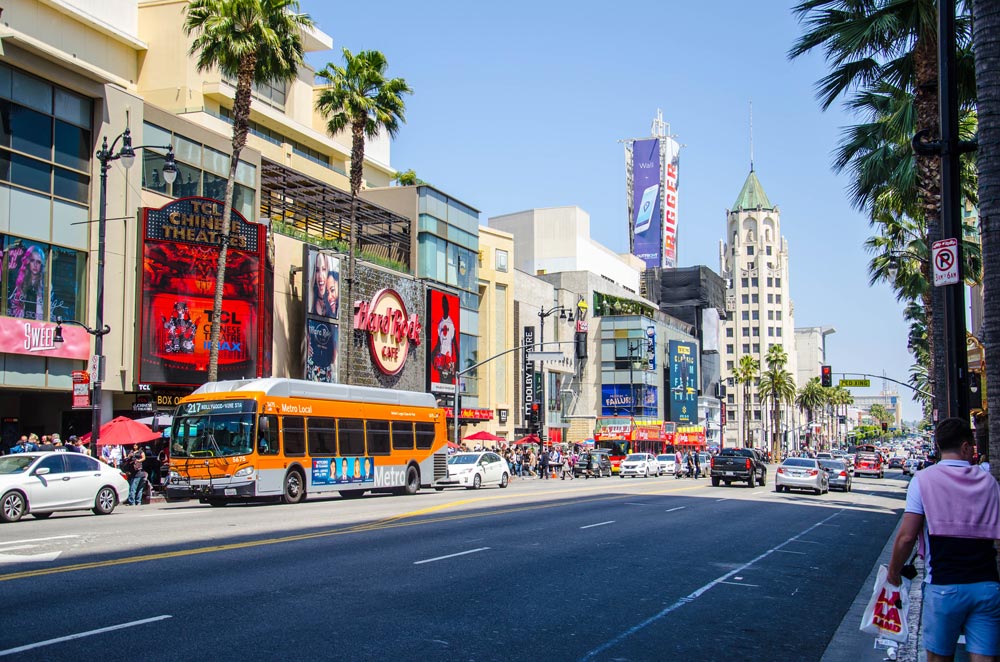
Moving to Los Angeles, for some, is a calculated and intentional act. For others, it might be more of a spontaneous gesture due to the area’s enviable climate and the opportunity to live in a major and exciting metropolis. If you’re thinking of making the move, you’ll be in good company with at least 100,000 other transplants who will relocate to LA in the next year. The population continues to swell, which is why it’s no surprise that LA County is larger than 43 states.
When moving to any new city, there are certain things better prepared in advance. If you want to move to Los Angeles, it’s even more important to factor in the relocating unknowns because the cost associated with moving here is so high. Keep in mind some of these tips as you start to plan:
Tips for Moving to LA
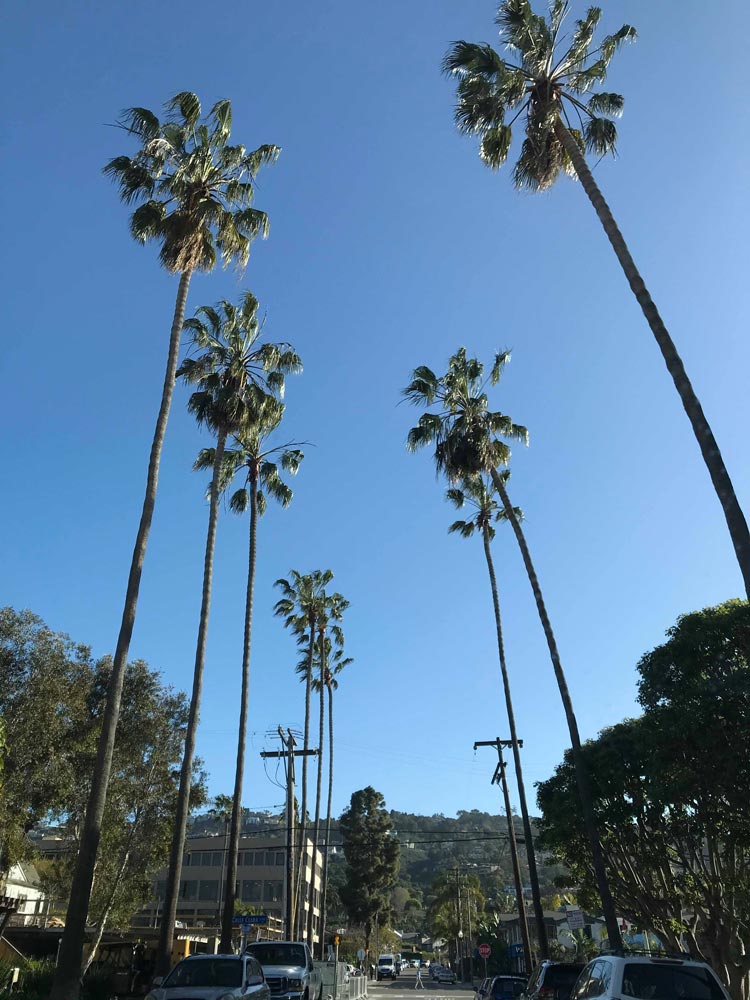
- Factor how much you will need in savings before making the trip. This dollar amount will vary based on your specific move. If you’re going to Los Angeles without a job, add up necessary living expenses for three months and be sure to have that and basic moving costs on hand to act as a buffer.
- Consider how to get your car there. In LA, more often than not you’ll need a car unless you’re living and working in a neighborhood like Downtown LA, Hollywood or Culver City. Sometimes it makes sense to have your current vehicle shipped or to drive it across the country. Other times it would make more sense to sell your current car and buy or lease a new one in LA.
- Pick your neighborhood before you get into the city. Narrowing down your choices before packing up and moving means you’ll have a better sense of what your actual cost of living will be. This doesn’t mean you have to sign a lease before getting into the city. It means you should start apartment or house hunting now.
- Don’t get discouraged if you need two jobs to make ends meet early on. There will be many successful people in Los Angeles that could make you think you are failing. For every successful person you meet, there are numerous more working multiple angles to make a living.
- Need storage space for your belongings while you get settled? Take a moment to check out the monthly cost of self-storage in Los Angeles, ensuring your transition is both organized and cost-effective.
Whether you’re moving for a job, warmer climate, or some other reason, Los Angeles is one of the most diverse and progressive cities you’ll find. Keep in mind, though, that you may have to sacrifice a few creature comforts along the way.
Update: This post was originally published on March 24, 2017, and was revised on May 8, 2020, with new information from Los Angeles expert and DTLA resident, Gabe Vogt.
